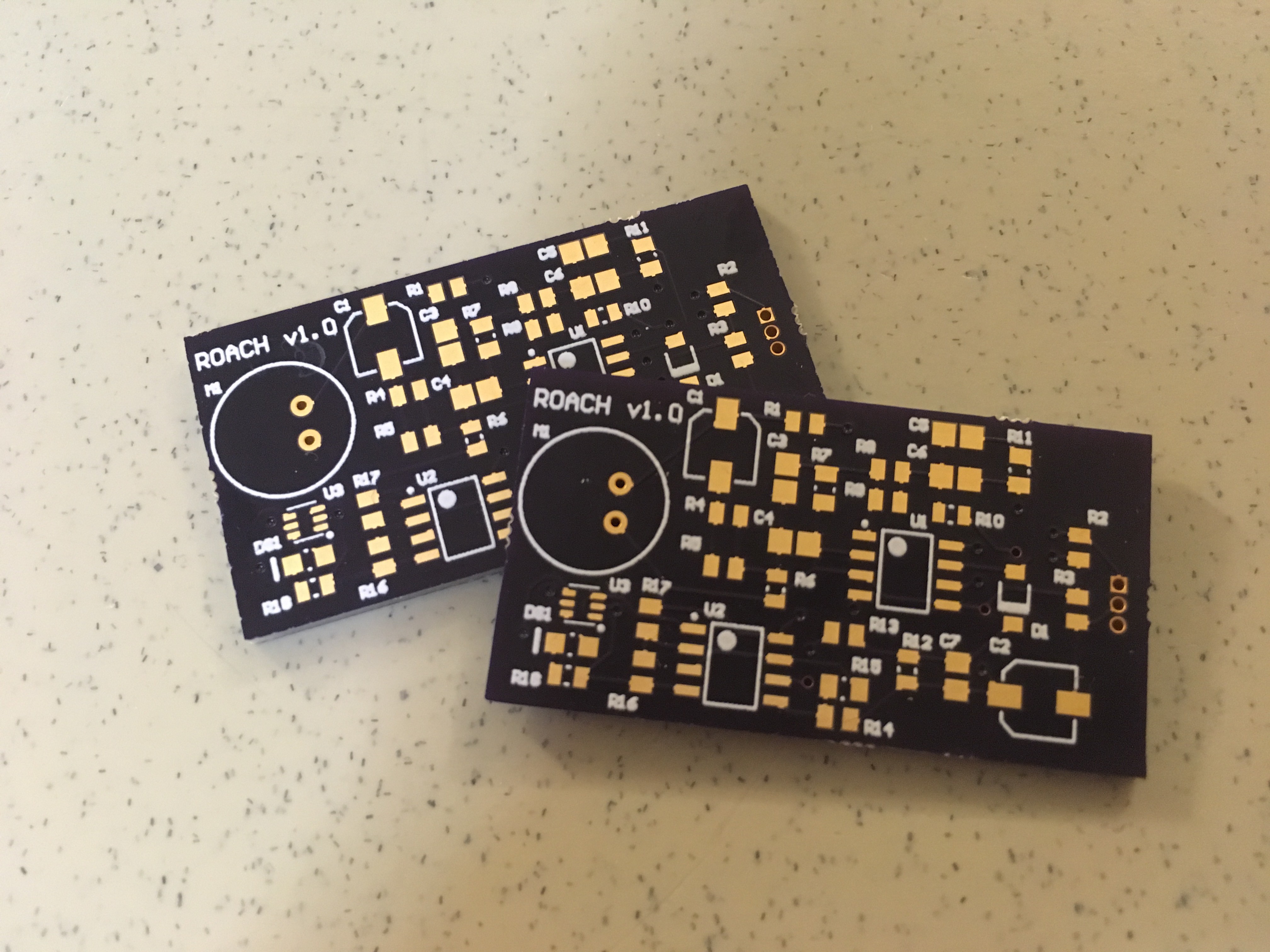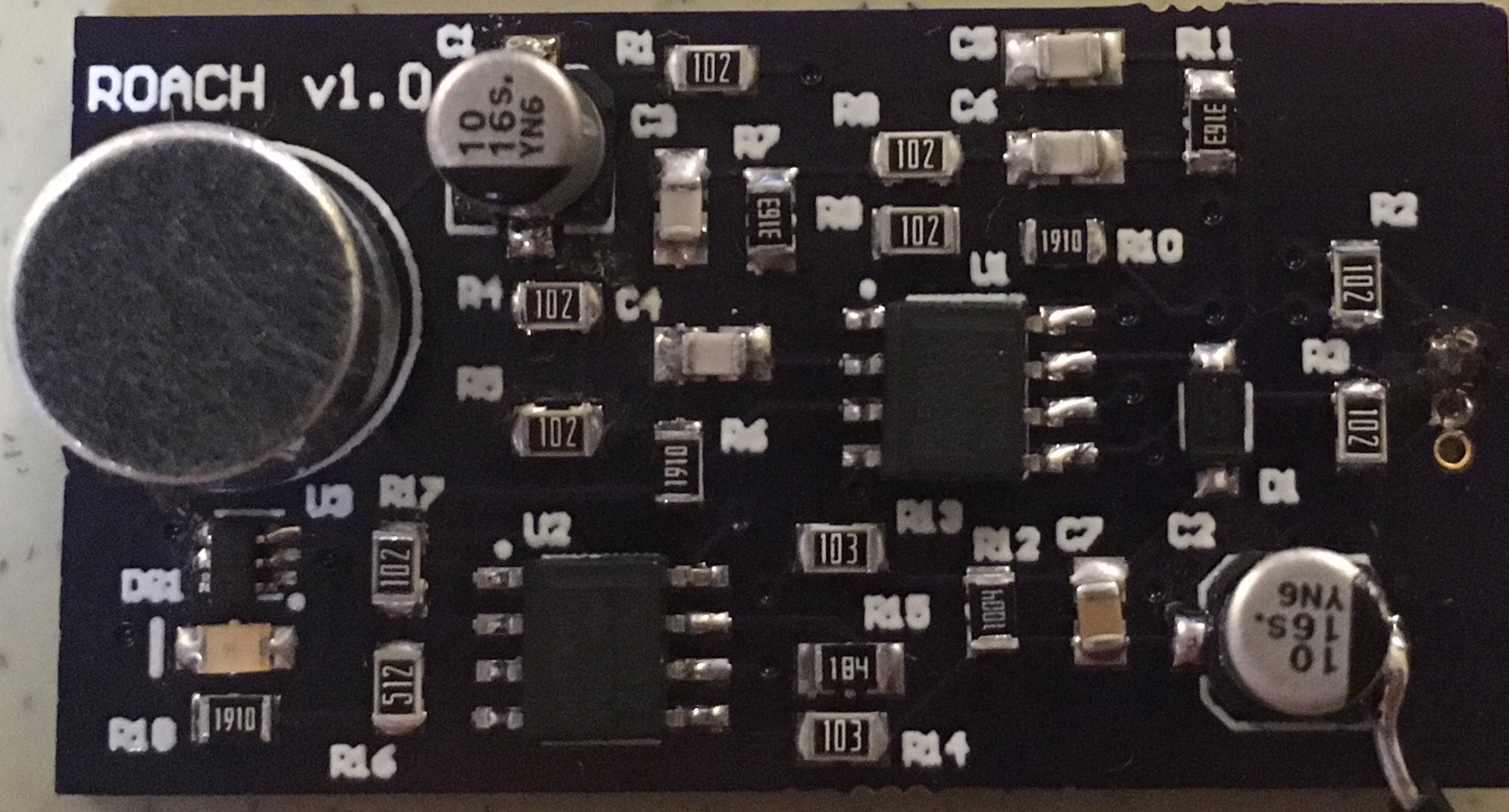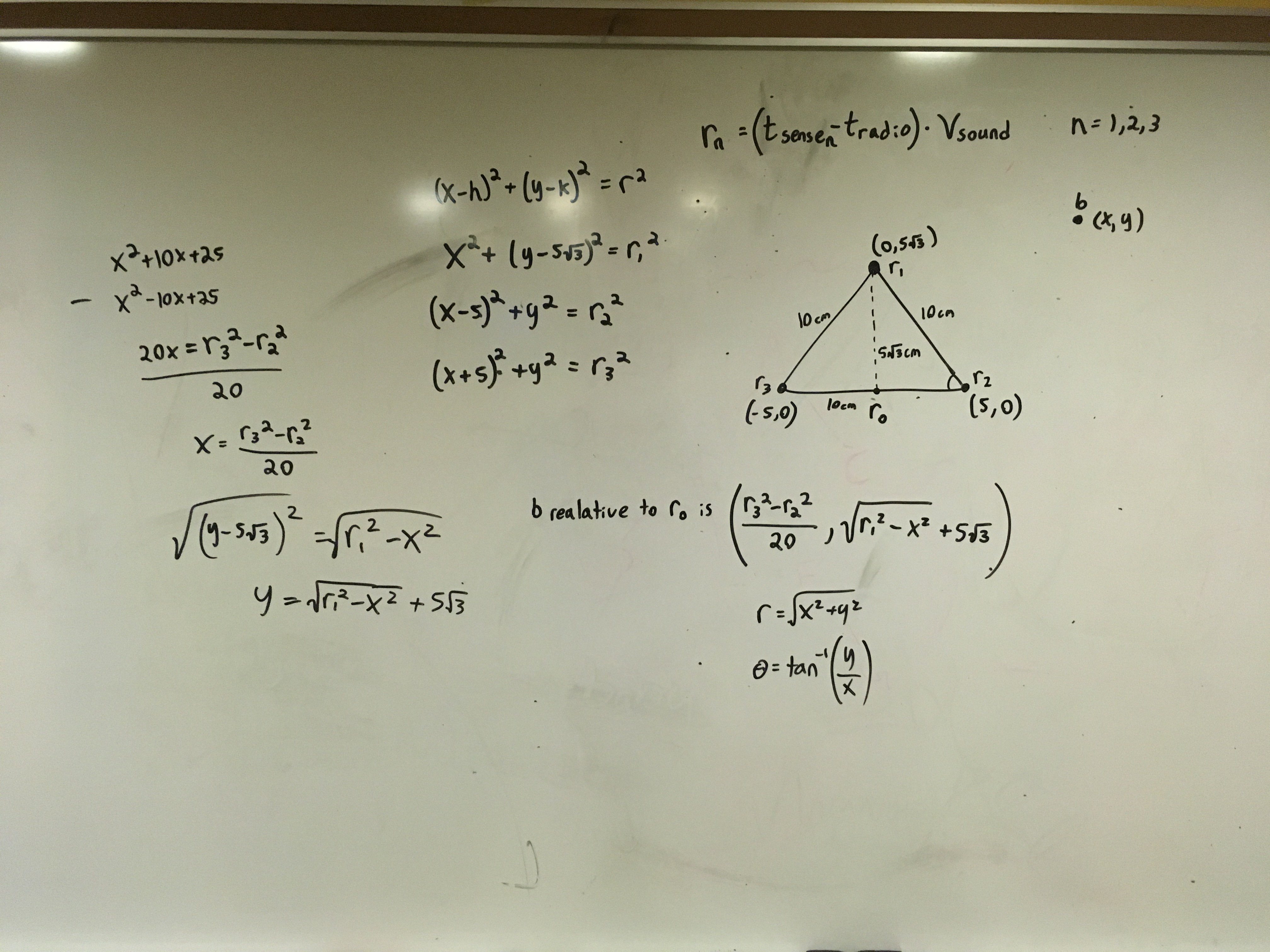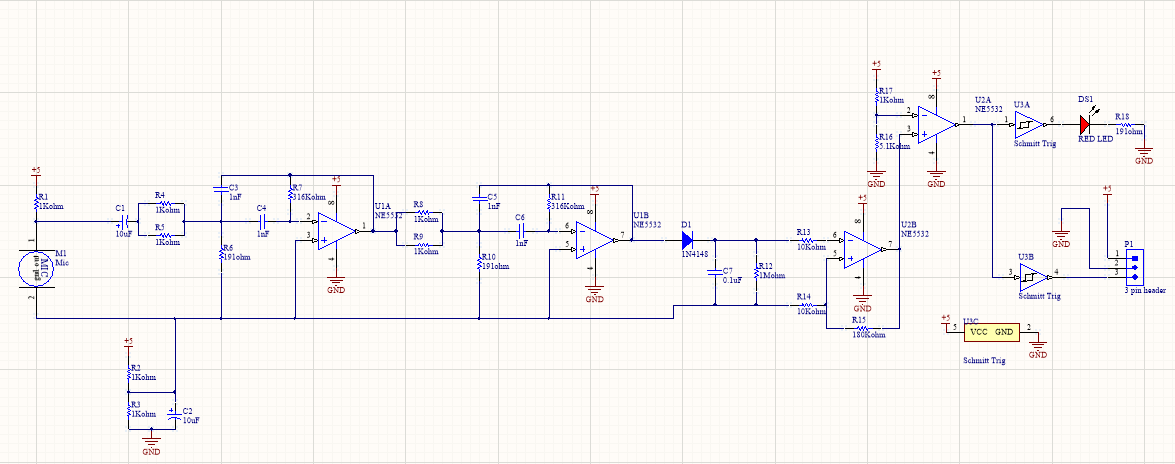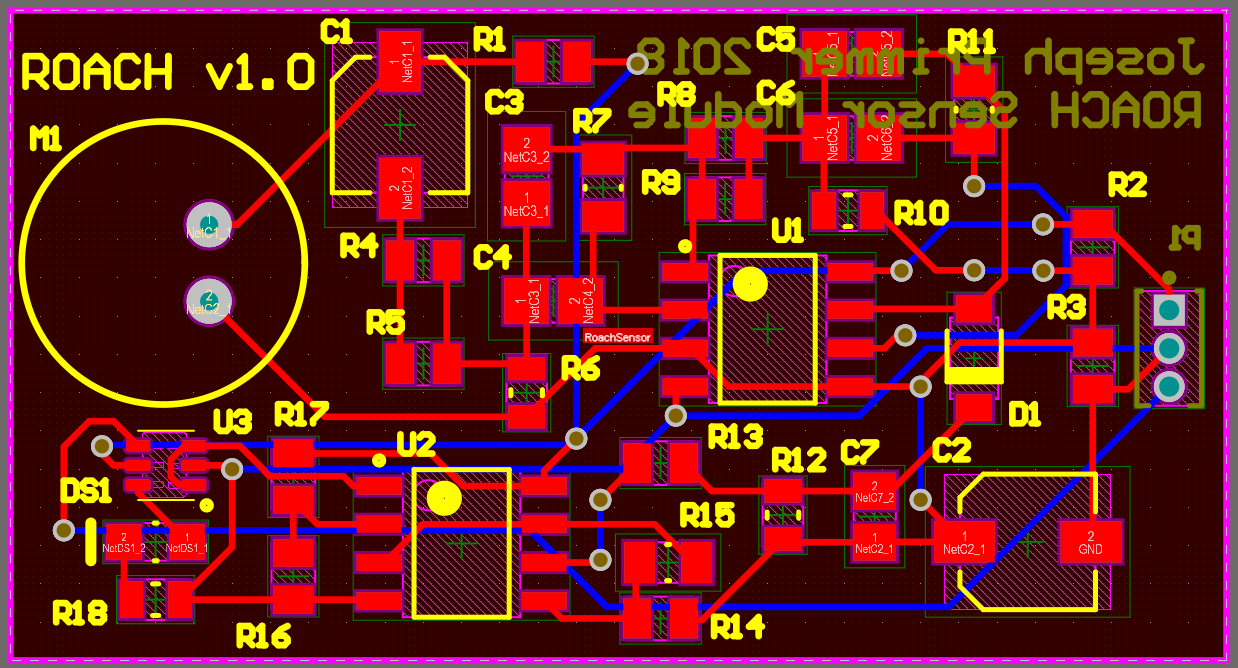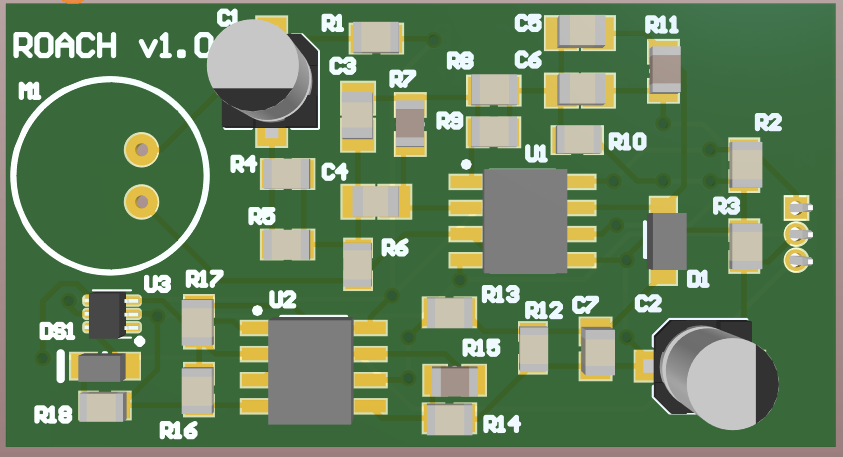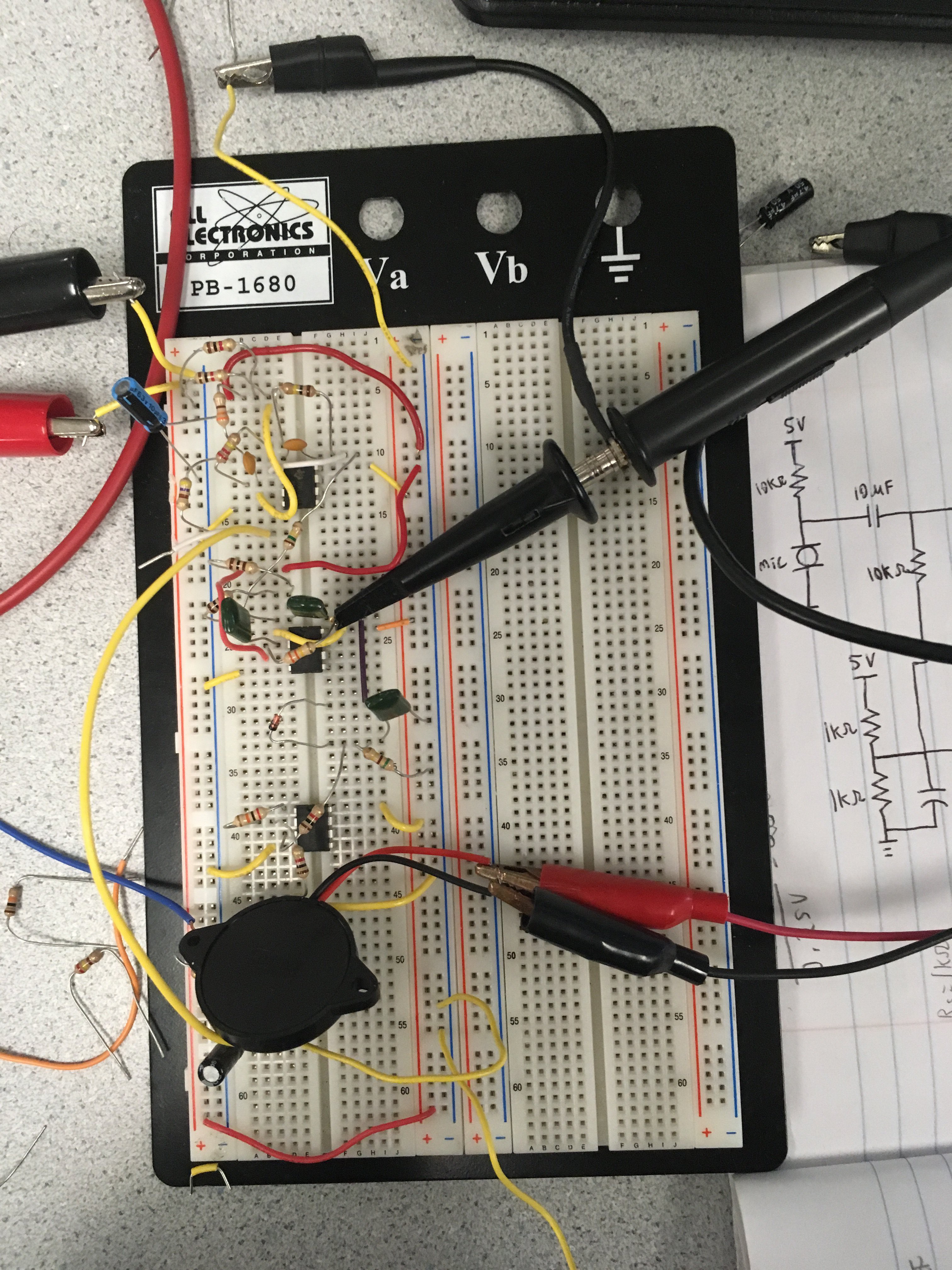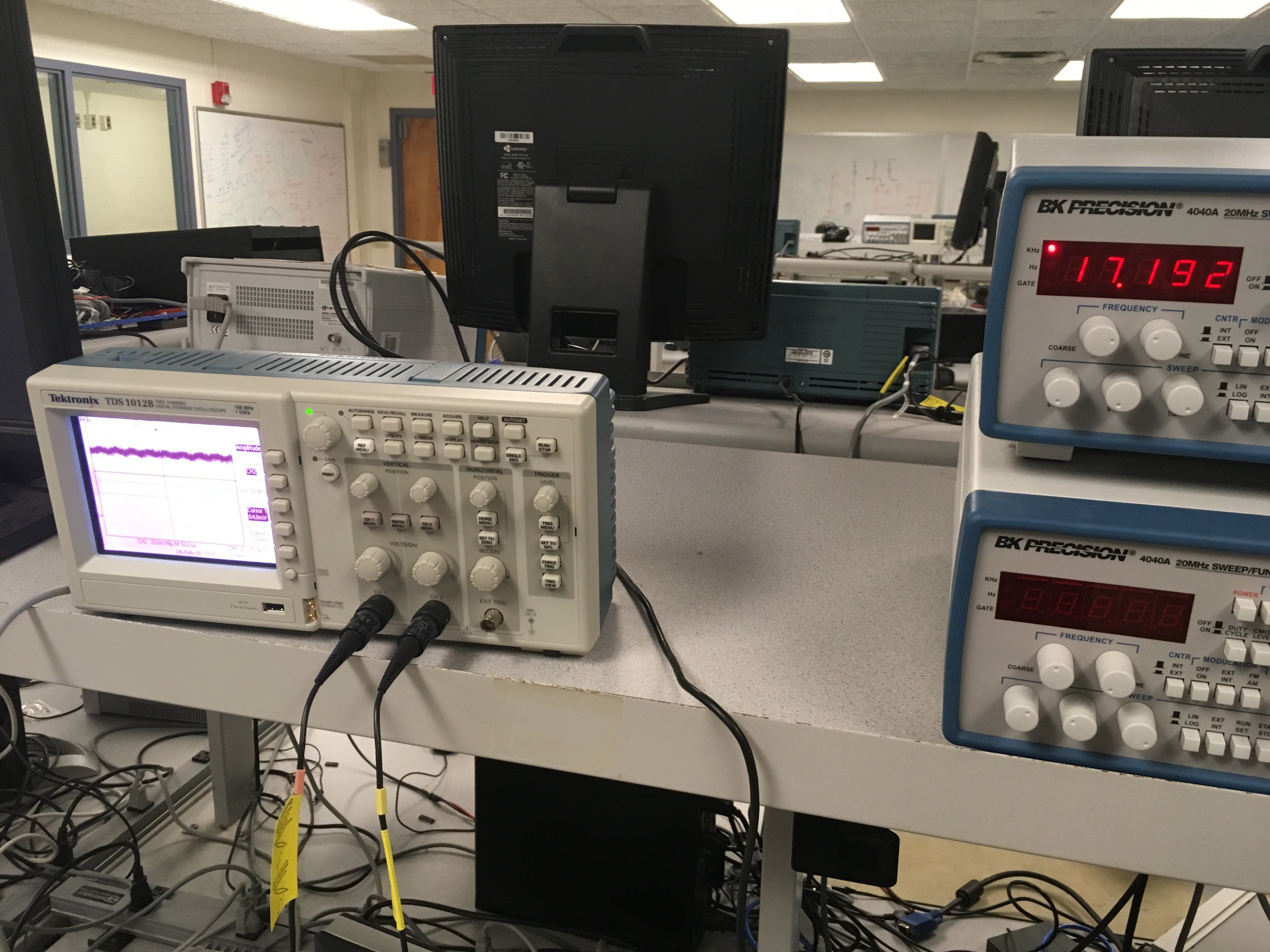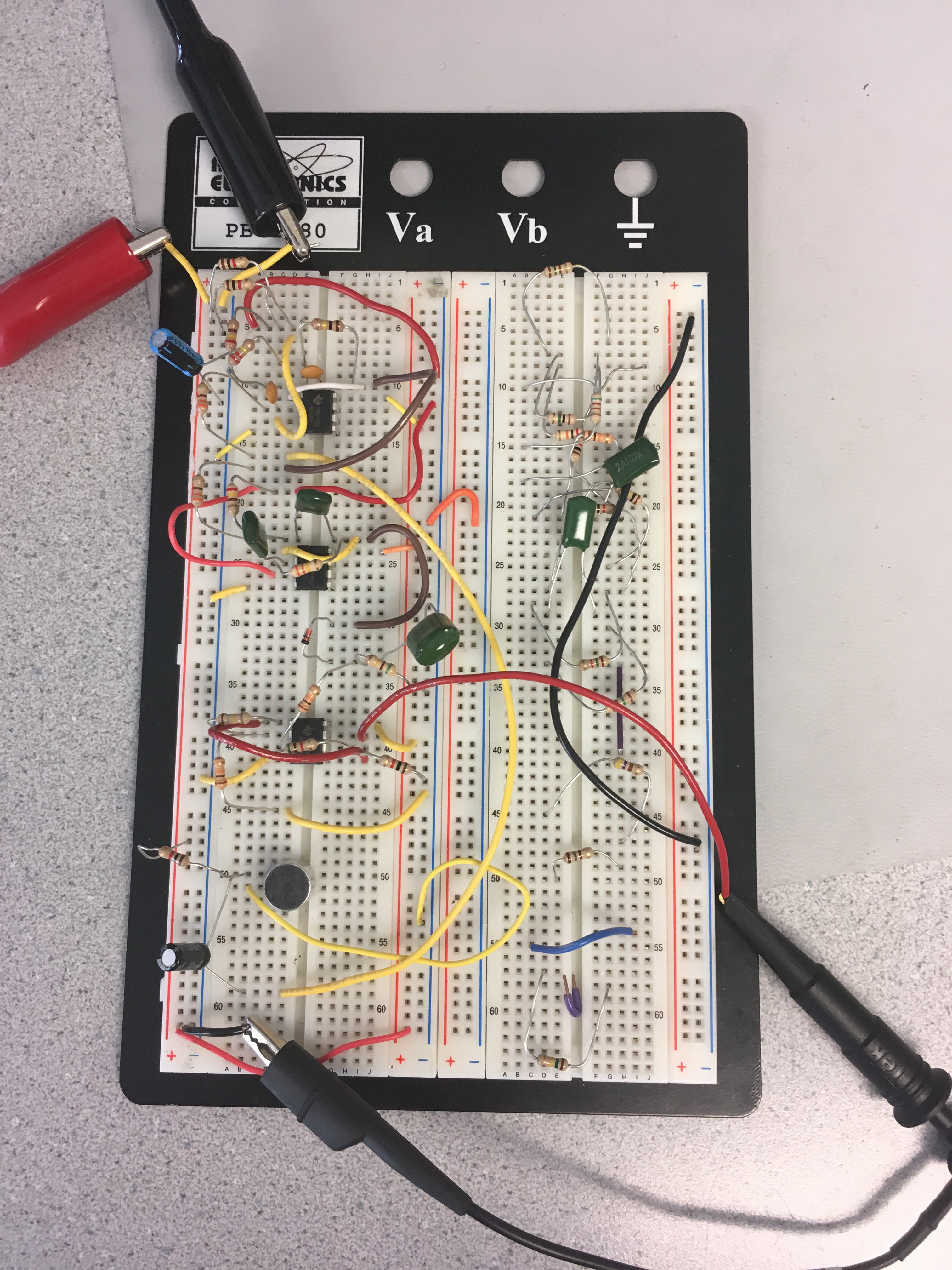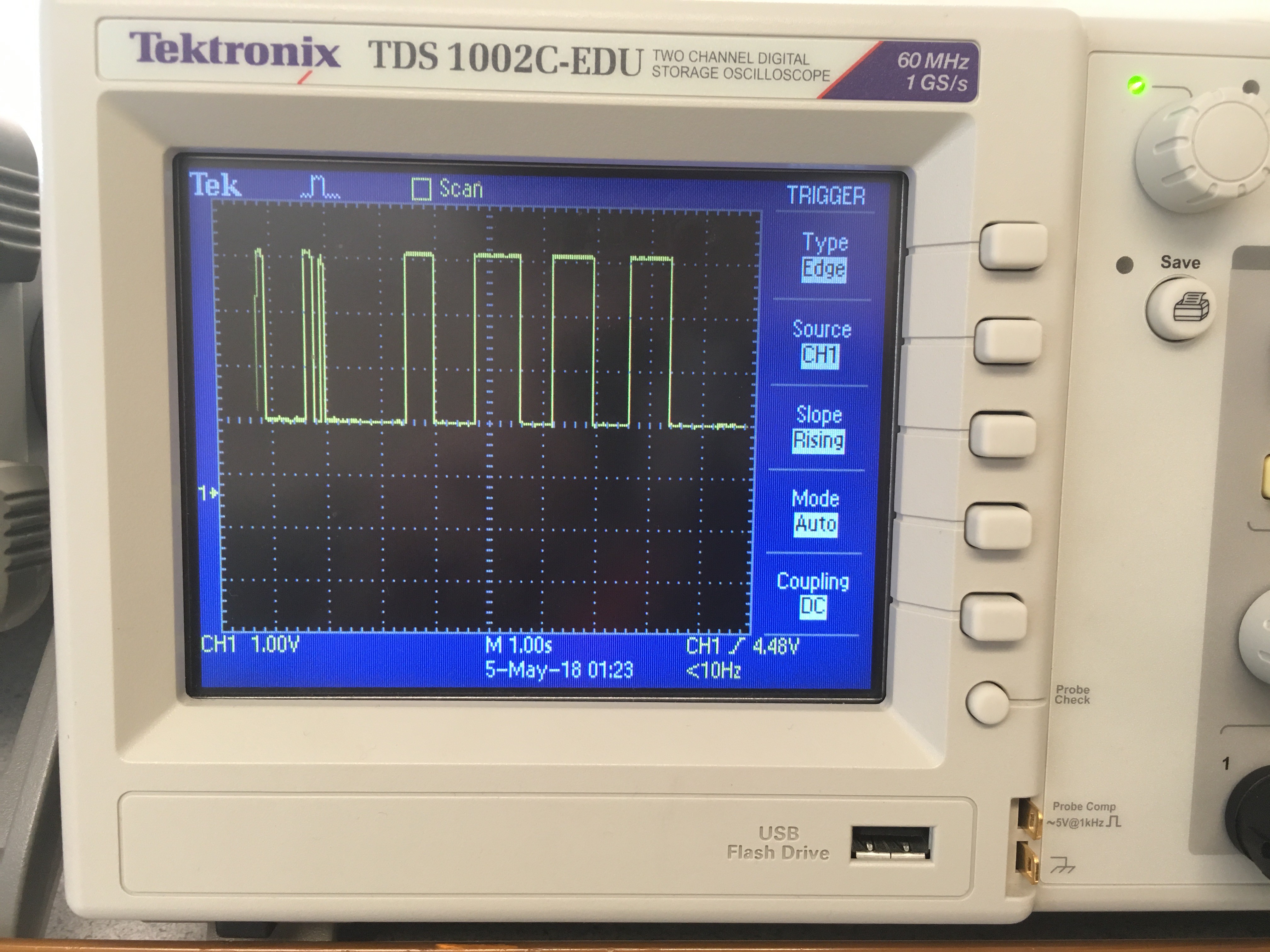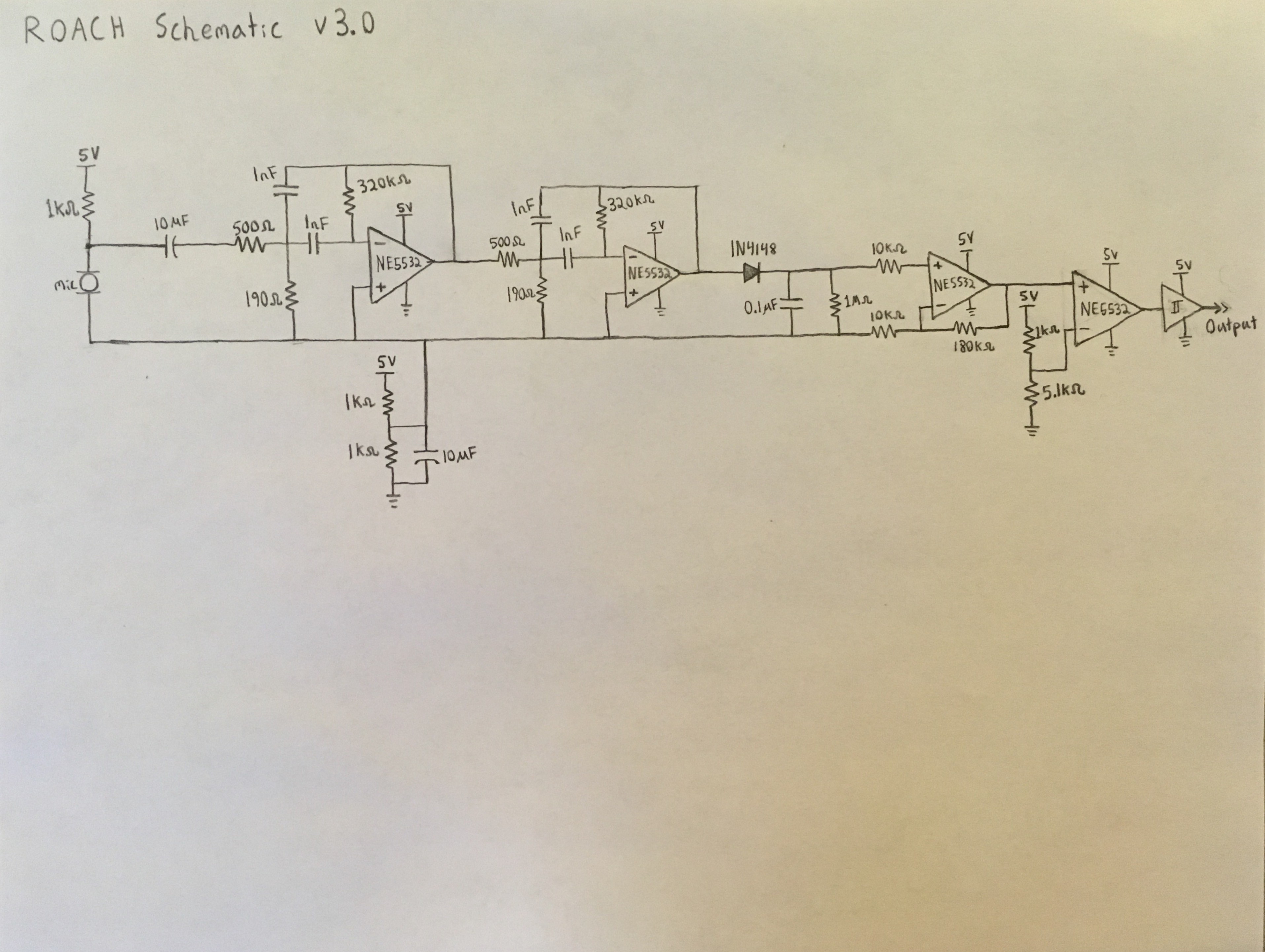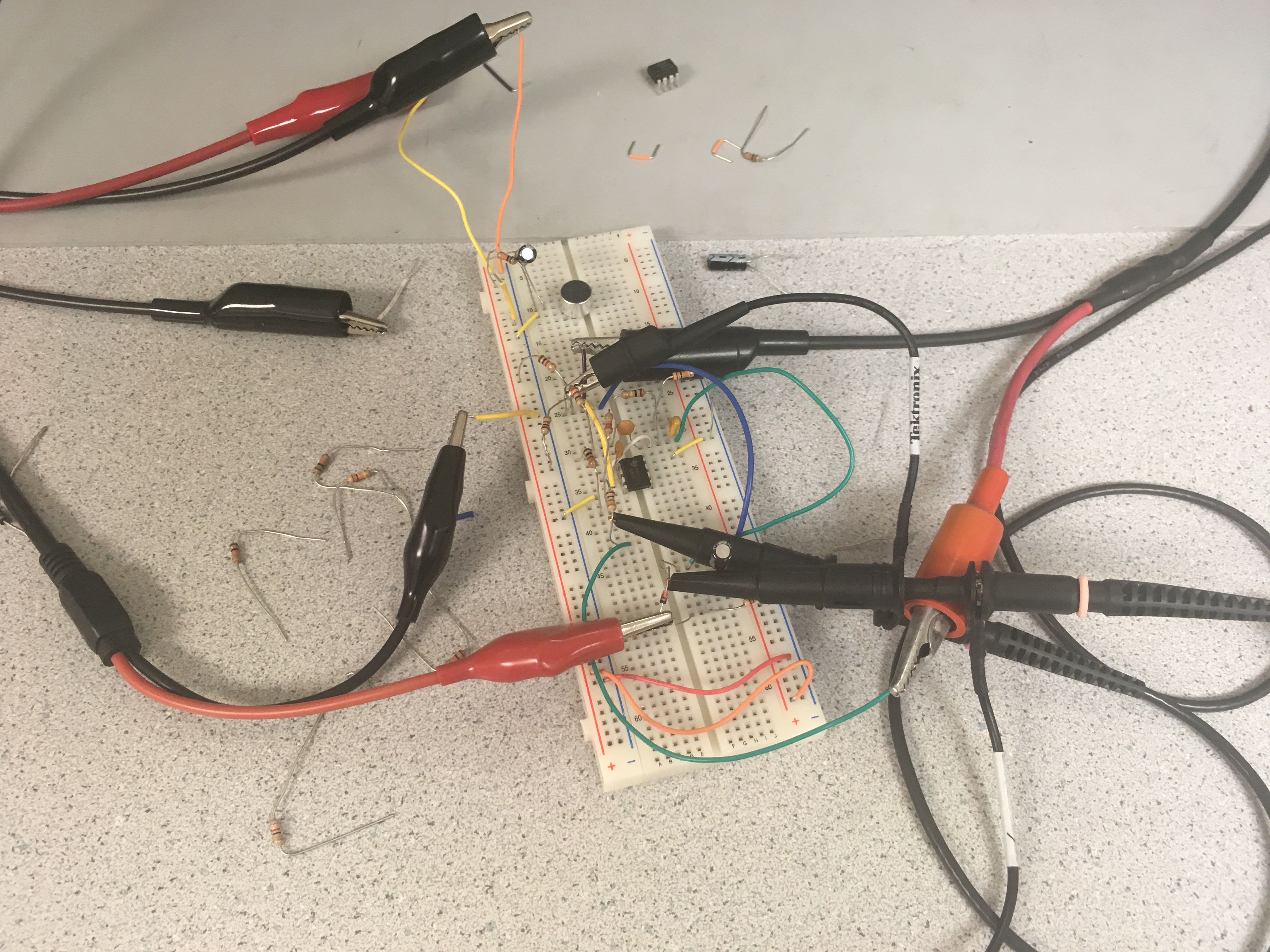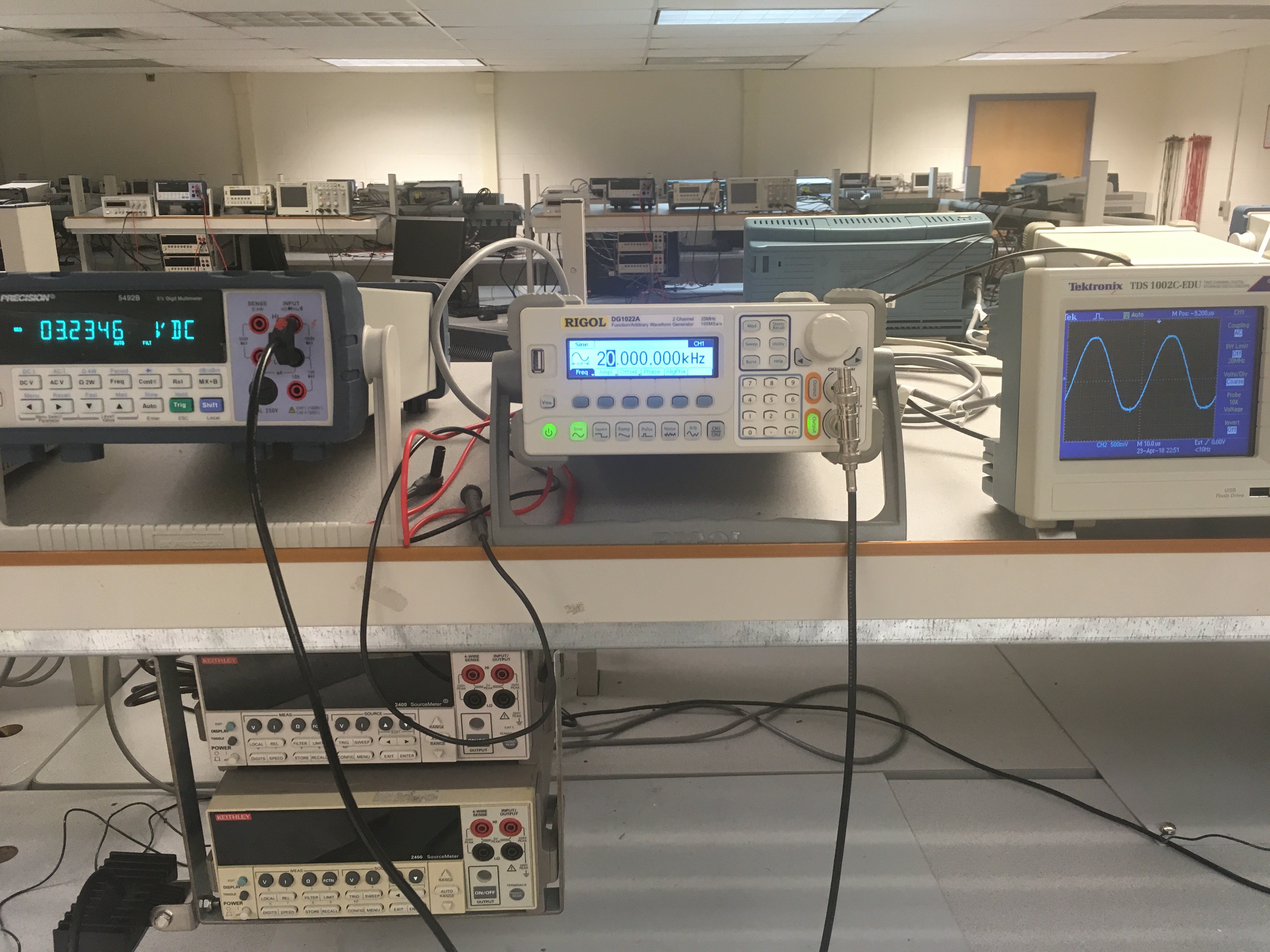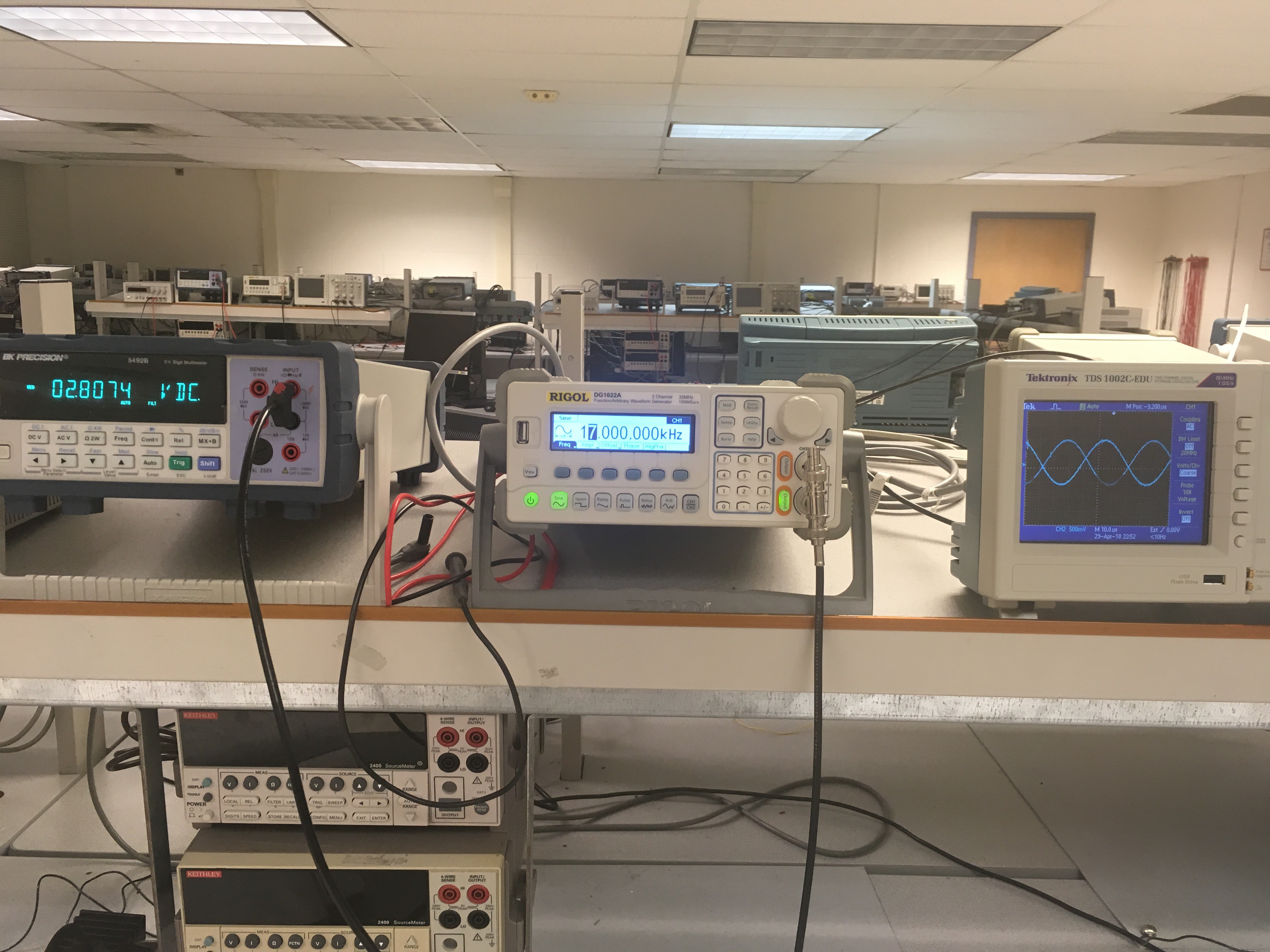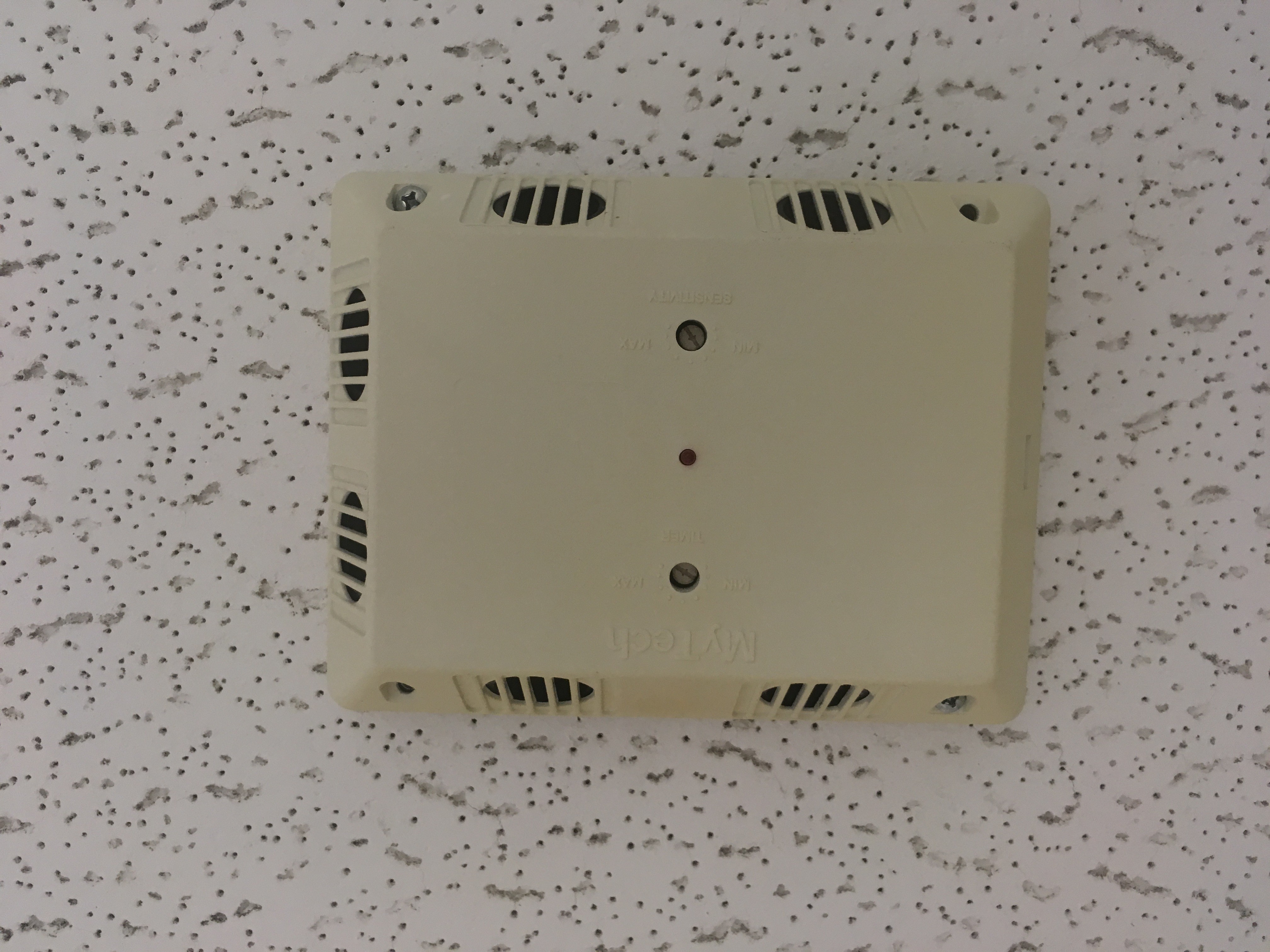-
Log 004: PCB Assembly
05/18/2018 at 00:34 • 0 commentsMy PCBs from @oshpark arrived today!
Here is one assembled:
![]()
I don't know whether these work yet because I haven't gotten around to testing them.
I also worked out some of the math for using times of arrival to calculate location:
-
Log 003: PCB Design
05/09/2018 at 20:08 • 0 commentsIt's my last day of classes, so I decided to celebrate by sitting down for a few hours and designing the PCB for the ROACH sensor module.
This is the schematic I came up with for the PCB:
This is the PCB itself. It has a 3 pin header for 5V, GND, and Digital Output:
I am fairly new to PCB design and feedback would be greatly appreciated!
Also, I am probably not going to order these today. I am going to wait until tomorrow, so I can look over my design again when I'm more awake and then order.
-
Log 002: Breadboard Prototype and Schematic
05/05/2018 at 17:46 • 0 commentsWednesday:
I continued my breadboard prototyping by trying to get my mic & filters to respond to a piezo speaker, however, no matter what gain on my filters I tried, I couldn't get a good response:
I was on the verge of giving up when Professor @Bruce Land suggested I use one of his "really loud" 24kHz ultrasonic transducers. This transducer showed much more promise than the piezo:
I could get a response on an oscilloscope even when the transducer wasn't playing at its 24kHz resonance frequency. I decided to re-tune my filters for 24kHz in order to take full advantage of the transducer's abilities.
Thursday:
I ran around in circles for several hours because I had accidentally shorted my voltage reference to ground. :(
Friday:
After re-tuning my filters and putting that signal through an envelope detector, amplifier, and comparator, I was able to get a fairly clean output that was either at 4.4V or 1.4V based on whether the transducer was playing or not. I could even get a range of about 2 meters (may try to improve this in latter designs) in the room with the occupancy sensors!
4.4V and 1.4V isn't quite a good digital signal, so I will probably put this through a Schmitt trigger as well. I could also use a differential drive on the transducer to increase the range a bit.
Here is the schematic I will probably use for the PCB I plan to design (I may start out with just designing small sensor modules instead of a full board with a microcontroller on it. This will make it easier to experiment with different microcontrollers):
![]()
![]()
-
Log 001: Design Plan and Initial Experimentation
05/01/2018 at 15:09 • 0 commentsJune 4th is going to be a tough deadline to make for this project because I would like to design a PCB for the module that will contain the filters and microcontroller (perhaps a PIC32). I'd like to be able to assemble the PCB at school where I have access to nice equipment and decent soldering irons meaning I need to design and send out the PCBs ASAP (school ends May 22nd).
Here is my proposed schedule:
- April 23rd - May 5: Breadboard experimentation & Filter design + Proof of concept to show I can use a set of two microphones/filters to measure a distance
- May 5 - May 9: PCB design (send out PCBs to be created on May 9th)
- May 9 - May 15: try not to fail my ECE exams
- May 15 - May 22: Write microcontroller firmware + PCB assembly + cardboard prototype + beacon prototype
- May 22 - June 4: Integrate Module into a basic robot
- June 4+ (Improvements phase):
- Design 3D model of module and beacon to be 3D printed
- Integrate module into a more practical application, i.e.: shopping cart or video robot (I might do this as part of a class I'm taking next semester)
My progress so far has been getting the Hi-Q band pass filters mostly working when hooked up to a function generator (I need to adjust the gain a bit and maybe cascade two of them together). I've also been able to figure out the envelope detector. Here are some pics:
My setup.
At 20kHz the signal is allowed to pass through and the envelope detector puts out about 3.2V.
At 17kHz the signal can be seen to be attenuated on the oscilloscope and the envelope detector only puts out 2.8V.
When I tried to interface this system with my microphones however, everything went awry! I kept getting this weird 20-25kHz signal that seemed to be coming out of nowhere! After looking around the room however, I found the culprit:
An occupation sensor with ultrasonic transducers on it. Darn. Guess I can't test in this lab. (I guess that also means robots with this module can't be used in rooms with occupancy sensors).
Location Sensor Module (ROACH)
A device that can calculate its location relative to a 24kHz sonic beacon
 Joseph Primmer
Joseph Primmer